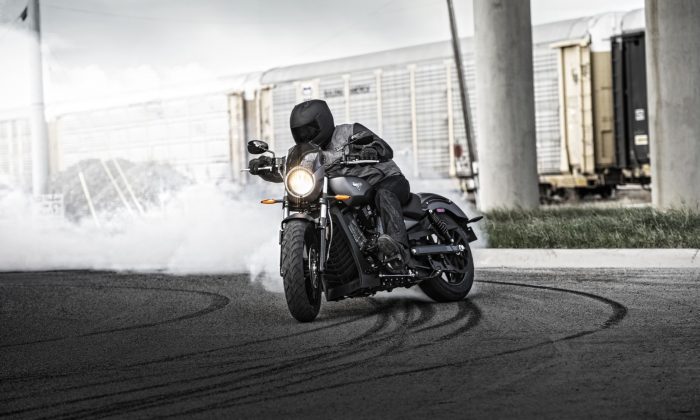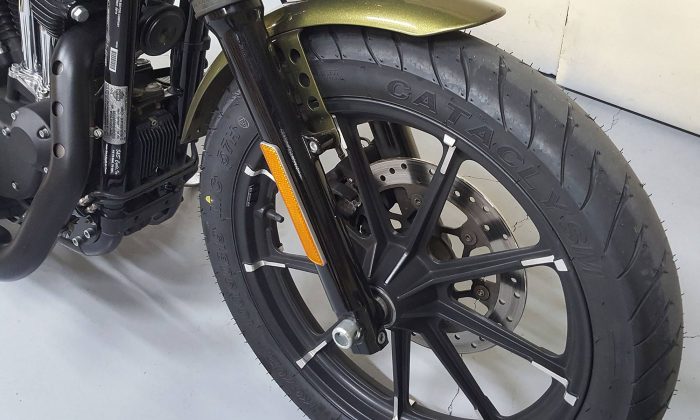Introduction: Nathan’s Motorcycle Experience
Hi, guys! My name is Nathan, and I’m here to share my review of the Kenda Cataclysm motorcycle tires. I’ll be installing these on my 2018 Harley Davidson Ultra Limited. This bike has clocked approximately 17,000 miles, and it’s been on the stock Harley branded Dunlop tires, specifically the D407 model. These are the very same tires that came with the bike. With close to 17,000 miles, the back tire is nearly worn out, while the front still has some tread life.
I’ll delve into more details on that later.
The DIY Tire Changing Journey
Before I get into the specifics of the Kenda tires, I’d like to preface by mentioning my extensive experience with changing motorcycle tires. For nearly 20 years, I’ve been changing my own motorcycle tires. The journey began when I grew tired (no pun intended) of entrusting my wheels to motorcycle shops, only to have them returned scratched or gouged. And paying for such services felt like adding insult to injury. This drove me to start changing my own tires. Over the years, I’ve also assisted my friends with their tire changes. My setup includes a modified Harbor Freight tire changer, and I also use the no-scuff tire tool. I pride myself on ensuring that I never scratch rims.
Beyond that, I balance my own wheels using a static balancer. This method has proven its merit, even at high speeds of up to 160 miles an hour on my sport bike buddies’ motorcycles, without any vibration issues.
Ceramic Beads Inside The Kenda K6702 Cataclysm
Now, let’s talk about the ceramic beads in the Kenda K6702 Cataclysm. These beads are placed inside the tires for balancing. Many of my friends have reported success with this method. However, there have been a few instances where these beads, perhaps due to tire temperatures or the tire compound, have accumulated some of the internal rubber. This didn’t cause any performance issues, but upon tire change, we discovered that many beads had increased in size. When we examined these enlarged rubber beads, a ceramic bead was found at their center. This issue hasn’t been consistent but has occurred occasionally. While some friends still prefer these balancing beads, I personally stick with my static balancing method using motion Pro weights. With proper wheel preparation before applying them, these weights have never let me down.
Introduction: My Tire Changing Journey
Throughout my motorcycling journey, I have amassed a significant experience with changing tires. I’ve come to realize that not all tires are created equal, especially when it comes to their construction and installation. Notoriously, Dunlops have the most challenging sidewall and tread combination, making them particularly tough to install. Following them, Bridgestone tires are slightly easier, and after that, the Mutchler. However, the easiest tires I’ve ever worked with are Avons.
They’re incredibly simple to install. I’m anticipating that these Kenda tires will fall somewhere between the Avons and the Dunlops. Just from my initial flexing tests, I can sense they aren’t as rigid as the Dunlops.
When the time came for me to seek out tire replacements for my Harley, I did ponder on reinstalling the factory-branded Harley tires. However, their cost is exorbitant, to say the least.
How Crucial are Tires to a Motorcycle?
Many argue, and I wholeheartedly agree, that tires are the quintessential element of a motorcycle. I must admit, the Harley-branded Dunlops are exceptional. They’ve endured almost 17,000 miles, and I reckon I could push for another thousand miles.
However, my bike has started to show signs of wear, particularly when it tracks depressions and grooves on the road. The tracking has grown noticeably poor, indicating it’s high time for a change.
Another observation I’d like to point out is concerning the manufacturing date on these stock Harley tires. They date back to mid-2017. Now, the front sidewall of this bike’s tire is beginning to exhibit signs of drying out, resembling a cracking pattern. This occurrence is rather unexpected, especially for a Dunlop, considering it’s only been about a year and a half since the tire was manufactured. Such anomalies have further motivated my decision to change them.
Considering Options and Costs
As part of my tire shopping research, I looked into the Dunlop 407 series. A noteworthy point is that these are exclusively available via Harley-Davidson dealerships. The price tag is rather steep, with the rear tire alone costing upwards of $230. This pricing further nudged me to explore alternative brands and options.
The Dunlop Legacy and the Search for Alternatives
Dunlop’s ‘American Elite’ boasts a distinctive tread design that, while appearing different, is believed to be of a similar compound to some of their other models. However, these Dunlop tires come with a hefty price tag. I’ve previously equipped my bikes with the Michelin Commander twos and found them to be reliable. Specifically, I had these on a Kawasaki Vulcan Voyager, and their performance was commendable. Yet, in my quest for the ideal tire, I stumbled upon Kenda.
I’ve kept an eye on Kenda’s offerings for a while and was particularly intrigued by the Kenda Cataclysm K6702.
Despite being a relatively new entrant in the market—probably around for just a year or so—I find their design captivating. Specifically tailored for heavyweight touring bikes, it seems to me that these tires have been engineered with Harley Davidson models in mind. Their compatibility is evident not just in terms of size, but also with respect to their load ratings. When you juxtapose the load rating of these Kendas, both front and back, with that of the stock Harley’s, you’ll find them identical. Additionally, the number of plies they use on the tread and sidewall closely mirrors that of the Harley or the Dunlop setup. In essence, the Kenda Cataclysm stands out as an apt replacement tire for heavyweight bikes. Furthermore, these are dual-compound tires: harder in the center and softer on the shoulders. Such a design hints at durability.
How Does the Kenda K6702 Cataclysm Measure Up?
While I’m optimistic about the Kenda Cataclysm’s potential for longevity, I remain uncertain if it can match the durability of the stock Dunlop tires. Forum discussions reveal that the Dunlop D407, especially those branded by Harley, can last anywhere between 15,000 to 20,000 miles. Some riders, in a bid to maximize their investment, tend to stretch the life of their tires to the very limit. In contrast, the Dunlops have, in my experience, proven to be enduring. Whether the Kenda Cataclysm will stand the test of time is yet to be seen. Moreover, I’m not sure if I’ll be in a position to provide feedback on this aspect in the long run.
My Plans: A Series on Kenda Tires
To offer a comprehensive understanding of these Kenda tires, I aim to create a series of videos. This particular piece serves as an introduction, but I intend to produce a subsequent video detailing the installation process. You can expect a thorough account of the tire-changing process, which will cover both demounting and mounting. I might even incorporate a segment on balancing in that video. Stay tuned for these insights!
The Cost-Benefit Analysis: Kenda vs. Other Brands
When it comes to motorcycle tires, price often plays a pivotal role in decision-making. I managed to acquire the Kenda tires online from a Canadian vendor, and they were delivered to my doorstep at a total cost of $173 for both front and back. To put things into perspective, had I opted for the Harley-branded Dunlop alone, I would have had to shell out at least $230. When you consider the American elites, the price scales up even further, taking the total closer to $473 for both the front and rear tires.
It’s evident that Kenda offers significant savings without compromising on quality.
Why Venture Beyond Established Brands?
One might wonder, why veer off the beaten path and try new products when established brands exist?
To answer that, I’ve often found that there are undiscovered gems in the marketplace. While there have been certain products in the past that I might have sidestepped, I’ve also been pleasantly surprised by some lesser-known brands. For instance, Shinkos, which some riders swear by, delivered a commendable performance and longevity when mounted on a friend’s Goldwing. However, the Shingo 777 HD did not fare as well, as recounted by another rider whose tires wore out prematurely after just 4,000 to 5,000 miles.
Navigating the Landscape of Motorcycle Tires
It’s a fact that the tire market has its share of low-quality offerings. Nevertheless, Kenda seems to be establishing a reputation for quality. While there have been sporadic issues with some of their models over the years, this is not unique to them. Practically every tire manufacturer has faced challenges at one point or another. Tire performance can be influenced by myriad factors such as proper inflation, the appropriateness of the tire’s load rating for a given bike, geographical and climatic conditions, and more. It’s essential to consider all these variables when evaluating any tire brand.
Conclusion: A Holistic View on Choosing Tires
In the vast realm of motorcycle tires, Kenda has carved out a niche for itself by offering quality at an affordable price point. While some might be hesitant to deviate from tried and tested brands, it’s crucial to keep an open mind and explore the diverse options available. After all, the right tire can profoundly impact a bike’s performance and the rider’s safety. Taking the time to research, understand, and weigh the pros and cons of each brand will ensure an informed decision that aligns with both one’s budget and riding requirements. In the end, it’s all about striking the right balance between quality, performance, and cost.






